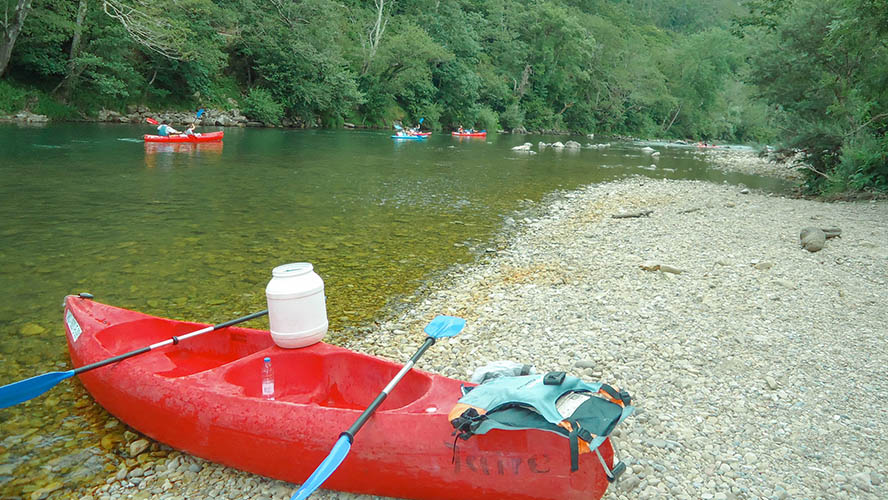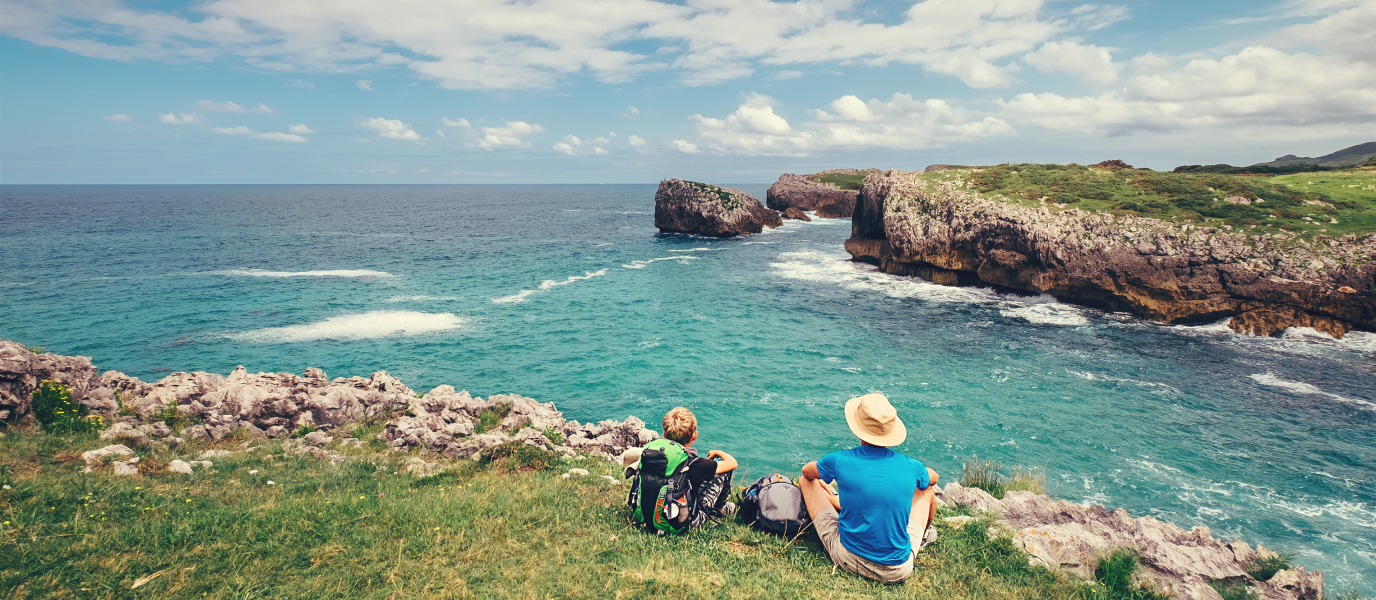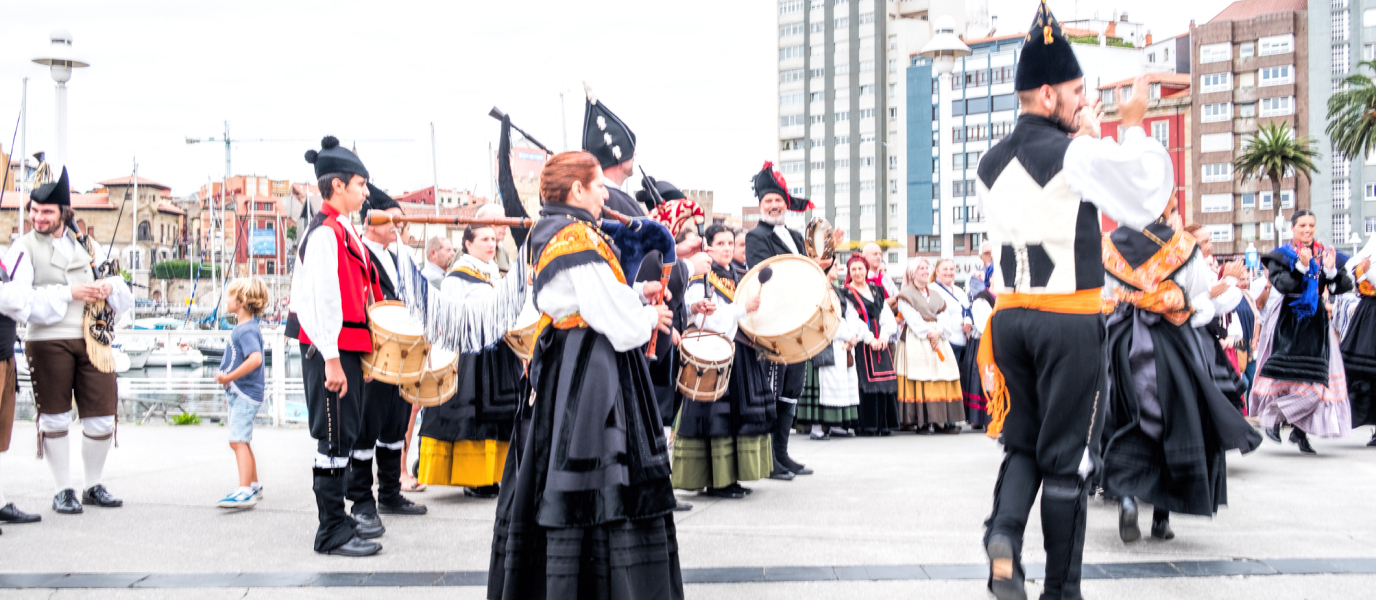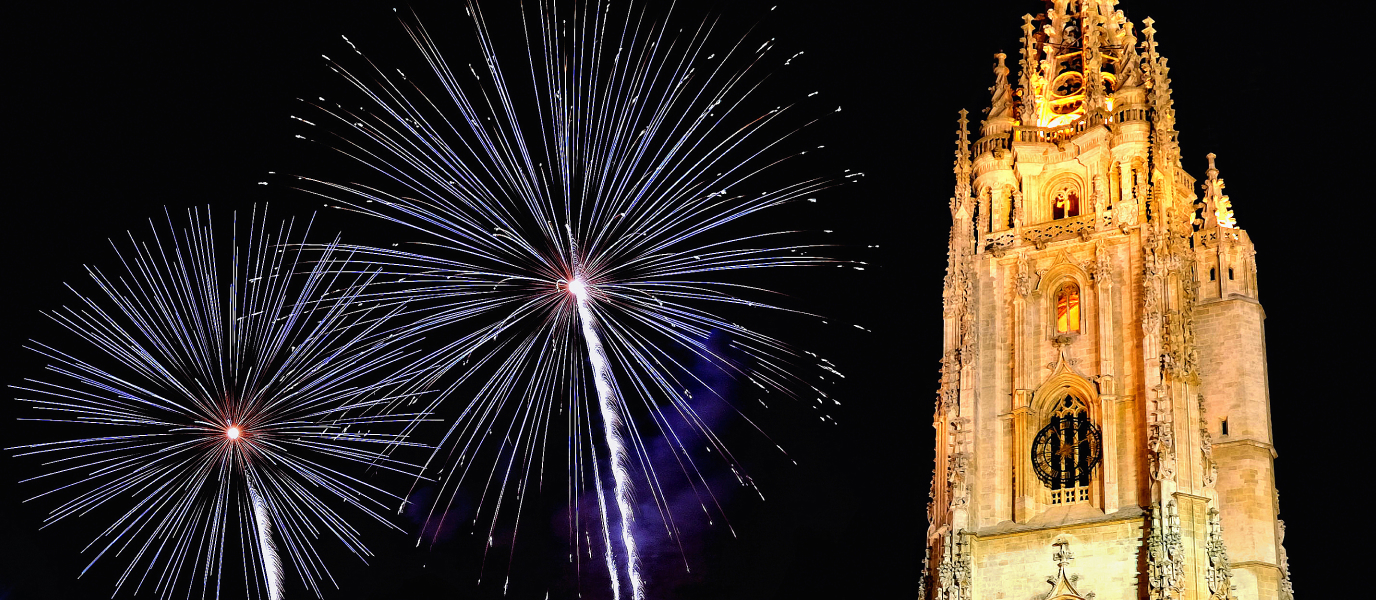Asturias, known for its unsettled weather, hosts a cornucopia of festivities during the warmest months of the year. During the summer months, there is some respite from the weather, so festivities can take place exactly how Asturians like them – outdoors, where they can take in the fresh air and the green countryside.
Covering all four corners of Asturias, from Easter to the end of summer, we give you the lowdown on the top festivities, many of which have been declared of National, and even International Tourist Interest.
One not-to-be missed festival is the Semana Grande de Gijón, be sure to pencil it in your calendar in August. Asturias provides the perfect, fun getaway for you and your friends.
The International Descent of the Sella River
Let’s begin with the annual celebration of the Descent of the Sella River. Declared of International Tourist Interest, this festivity owes its origins to a group of friends who, in 1930, raced down the 17 km stretch of river between Arriondas and Ribadesella. Today, the competition is organised by the Royal Spanish Canoeing Federation and has achieved international prestige among the canoeing community, bringing together more than a thousand canoeists.
During this event, canoeing is not the only thing on the menu. Take part in the multitude of activities, concerts, music and dance, and enjoy traditional cuisine from morning till the wee hours.

Asturian processions and ‘fiestas de prao’
Processions and ‘fiestas de prao’ highlight Asturian summers. The ‘fiestas de prao’ are a celebration of tradition, gastronomy and nature. Asturians gather around the village or town church and in pastures to celebrate the festivities of a religious event in essence, complete with pilgrimages, processions and liturgical ceremonies.
You’ll know you’re in the thick of one of these celebrations when you hear the sound of the bagpipes, and a hint of cider and bollo preñao (savoury chorizo-stuffed buns) reaches you on the breeze. Although the fiestas de prao take place all over the province, here is a list of a few that are not to be missed:
The Trasona Lake Festival (Corvera)
Declared of National Touristic Interest, this festivity kicks of the season of traditional celebrations on 1 May. Come enjoy the multitude of activities taking place around the lake of Trasona. Day activities include water sports and the evening delivers the most anticipated moment of the festivity – the open-air jamboree.
Quirós-Lena Lamb Festival (Prau Llagüezos)
On the first Sunday of July another festivity of National Touristic Interest takes place. Thinking of attending? Make sure to grab a light jacket and hiking boots! You’ll need to trek up to a pasture located 1,300 m above sea level to take part in this celebration. Once you reach the pasture, you’ll be compensated with a nutritious meal of roast lamb prepared on an outdoor asador (grill made of stakes).
Xiringüelu Pilgrimage (Pravia)
There is no better way to welcome August than with this legendary festival. Traditional casetas line the shores of the Nalón River, serving fresh cider, delectable empanadas and bollos preñaos. The day will fly by for the young and old alike as they take part in the activities and experience regional costumes, dance and bagpipes.
Cider Festivals (Nava and Gijón)
If there is one aroma tied to Asturias, it is without a doubt, the aroma of natural cider, a low-alcohol content beverage made from the fermented juice of three types of apples: sharp, bitter sharp and sweet. (url: Asturian cider: Types and where to go for tasting)
These festivals pay tribute to this drink that dates back to Roman times. They are not to be missed, if you are a cider aficionado. Bottoms up!
During the second weekend of July, visit the town of Nava to attend the National Cider Festival and taste test a few culines (term coined in Asturias to describe the amount of cider that can be drunk in one shot) of the best ciders of Asturias. The awards for Best Cider of the Year and Best Cider Pouring are awarded during the festival.
Come the end of August, the Natural Cider Festival of Gijón brings a vibrant end to the summer. What makes this festival so unique? Tens of thousands of people gather on Poniente beach, with bottles and glasses, and wait for the starting shot to begin simultaneously pouring cider! It’s quite the sight!
September Festivals in Asturias
Milder weather and maybe a day or two of rain won’t stop two of the most popular Asturian festivals from taking place in September.
Virgen de la Guía Festival (Llanes)
The seafaring town of Llanes pays tribute to the patron saint of the Virgen de la Guía on 8 September. The festival is by far one of the most exciting, colourful and attractive in Asturias.
The processions carry the patron saint all over Llanes and then bring her back to her shrine in Campo de la Guía, where Asturians pay their respects the only way they know how – with a folkloric parade.
The Festival of San Mateo and the Day of America
Since the 9th century, Oviedo, and many other Spanish provinces, come alive in mid-September with the traditional festivities of San Mateo. The festivities take place over nine days but there are two key days:
The Day of America, on 19 September, when a parade of floats takes over the street of Uría in Oviedo to pay homage to the ties that exist between Asturias and America.
The 21 September, when the city’s old quarter become alive with colour, music, wine and food as merrymakers, dressed in traditional costumes, celebrate the patron saint of San Mateo.
Easter in Asturias
Asturias shifts its focus to Avilés during Holy Week. Thousands of brotherhood members take the streets of the medieval city in solemn processions. Easter festivities wrap up with the traditional Fiesta del Bollo (“Feast of the Bun”) on Easter Monday, a celebration declared of National Touristic Interest.
However, Avilés is not the only city in Asturias to host unique and impressive religious scenes at Easter. Oviedo and Gijón also offer spectacular Easter celebrations. Holy Week processions take place throughout Asturias and you’ll witness first-hand their passion, zeal and reverence in the truest forms of tradition.






































































